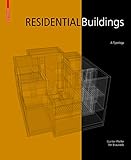Residential Buildings : A Typology / Günter Pfeifer, Per Brauneck.
Material type: TextPublisher: Basel : Birkhäuser, [2015]Copyright date: ©2015Description: 1 online resource (432 p.)Content type:
TextPublisher: Basel : Birkhäuser, [2015]Copyright date: ©2015Description: 1 online resource (432 p.)Content type: - 9783035603286
- 9783035603538
- 728 23
- NA7115 .P44 2015
- online - DeGruyter
| Item type | Current library | Call number | URL | Status | Notes | Barcode | |
|---|---|---|---|---|---|---|---|
 eBook
eBook
|
Biblioteca "Angelicum" Pont. Univ. S.Tommaso d'Aquino Nuvola online | online - DeGruyter (Browse shelf(Opens below)) | Online access | Not for loan (Accesso limitato) | Accesso per gli utenti autorizzati / Access for authorized users | (dgr)9783035603538 |
Browsing Biblioteca "Angelicum" Pont. Univ. S.Tommaso d'Aquino shelves, Shelving location: Nuvola online Close shelf browser (Hides shelf browser)

|

|

|

|

|

|

|
||
| online - DeGruyter Keramische Bausysteme : in Architektur und Innenarchitektur / | online - DeGruyter Enclose | Build : Walls, Facade, Roof / | online - DeGruyter Umhüllen und Konstruieren : Wände, Fassade, Dach / | online - DeGruyter Residential Buildings : A Typology / | online - DeGruyter Wohnhäuser : Eine Typologie / | online - DeGruyter Hauswartung : Für Bauten und Bewohnerschaft / | online - DeGruyter Das Geschäft mit der Stadt : Zum Verhältnis von Ökonomie, Architektur und Stadtplanung / |
Frontmatter -- Table of Contents -- Designing with typologies today -- I. The Courtyard House -- Introduction -- Floor plan types -- Shared courtyard house -- L-shaped house -- Group of L-shaped houses -- Patio house -- Atrium-type house -- II. The Row House -- Introduction -- Floor plan types -- Without staircase -- Longitudinal staircase -- Transversal staircase -- Longitudinal split-level -- Transversal split-level -- Back-to-back -- Front-to-back -- Back-to-back, “vis-à-vis” -- Two-zone house -- III. The Town House -- Introduction -- Floor plan types -- Row -- Twin row -- Single-aspect row -- Perimeter block – continuous -- Perimeter block – perforated -- Infill -- IV. The Freestanding House -- Introduction -- Floor plan types -- Semi-detached -- Communal staircase access -- Courtyard access -- Hybrid -- High-rise -- Bibliography -- Illustration credits
restricted access online access with authorization star
http://purl.org/coar/access_right/c_16ec
The systematic development of building types is an important task in housing construction. A deeper understanding of the underlying building types is mandatory, both for individual designs and for the wider application and variation of tried-and-tested structures. The authors have developed an innovative, drawing-based approach for unfolding the potentials of several existing building types for the future of urban housing. The first part is dedicated to the courtyard house, in which the courtyard is used as a private outside living space. The second part deals with the popular form of the terraced house and discusses aspects of corner solutions or terraced developments as an urban design element. In the third part, the townhouse is discussed with view to variants such as single-story and apartment buildings, including aspects of privacy and public access, as well as living and working. Finally, the detached house type is considered in its potential to provide all-directional orientation of the living space. The array of solutions is presented consistently in floorplans and cross-sections drawn to scale. In a new introduction to this all-in-one compendium the authors discuss the implications of the typological approach for today's housing design.
Mode of access: Internet via World Wide Web.
In English.
Description based on online resource; title from PDF title page (publisher's Web site, viewed 30. Aug 2021)


